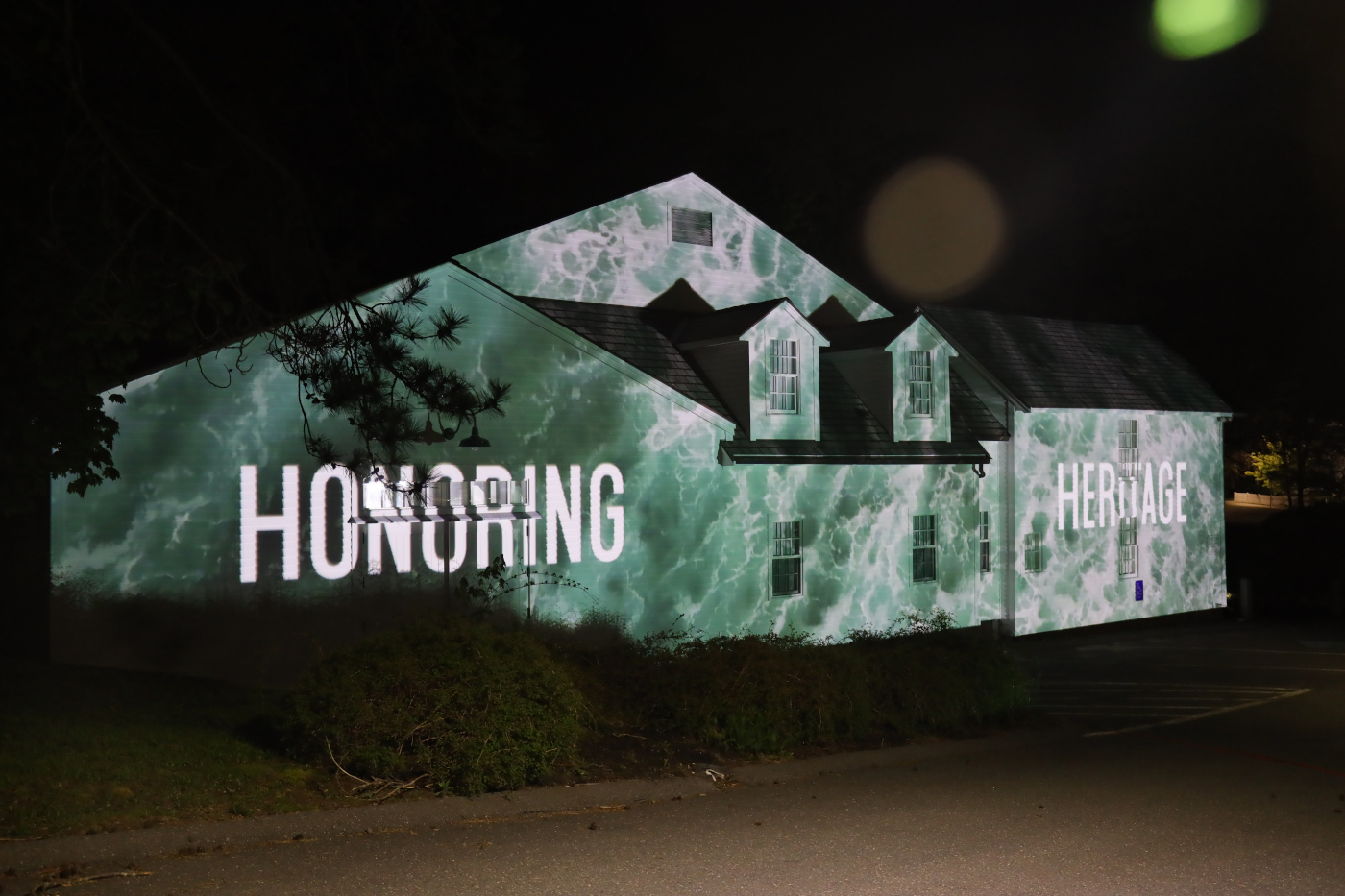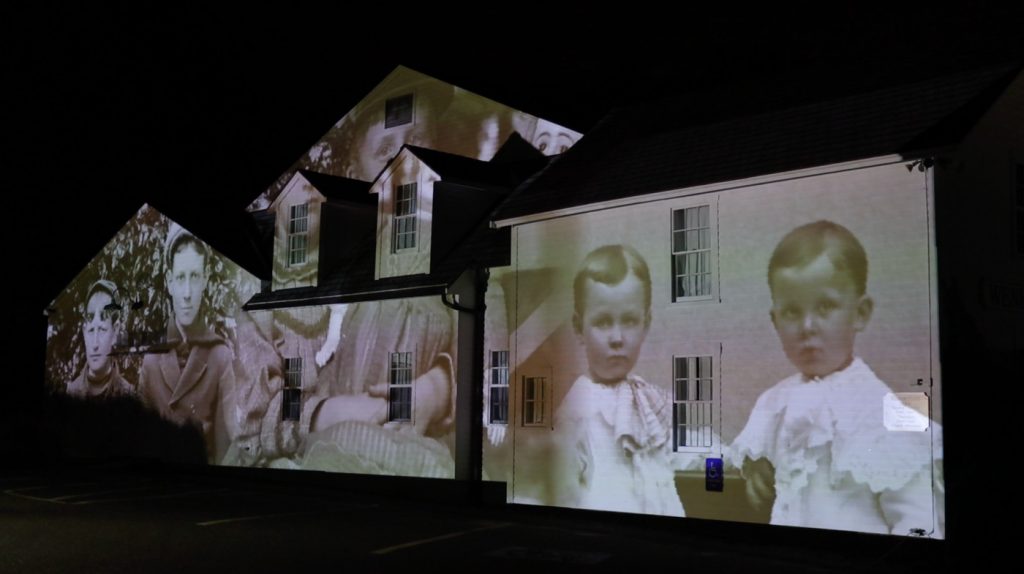The benefits of projection technology are becoming even clearer in a post-COVID-19 world.
We know that 4K projectors produce images with incredibly high resolution and superior color accuracy. Well, the vivid, detailed images projected aren’t just for cinemas anymore. Projection technology is a great solution for emerging vertical markets, particularly those that call for high detail, true color rendition or cinema-quality video. Right now, businesses are reimagining a world after the novel coronavirus (COVID-19) and they’re considering how they can attract customers in new, engaging ways. Projection technology might be the answer to AV challenges that have arisen due to social-distancing protocols and capacity limitations.
Project Onto Anything
Projection technology can create immersive interactions, delivering magical moments that other digital technologies would struggle to create. When utilized to its fullest extent, it can also enhance engagement, becoming a highly customizable and artistic tool that offers the user both versatility and flexibility. For example, Bravo Media Productions extended its studio’s 4K-projector installation from multiple smaller setups projecting onto different walls to a single, large setup that spans the room’s 360-degree canvas. By visualizing its studio as a 360-degree space (rather than four separate walls) and measuring the dead space, Bravo Media Productions can create a live piece of art that moves and changes in real time, engaging anyone who walks in the door. In this way, projection, although typically less expensive than displays or videowalls, can still delivers a customizable installation within a space of any size or shape.
Experiential Art
Projection mapping uses projectors and specially designed software to display images, animation or videos onto surfaces. Because it can transform any two- or three-dimensional surface into a showcase for still or moving images, projection mapping has become an increasingly popular enhancement—sometimes even a main attraction—for concerts, sports events, art installations, advertising initiatives and countless other creative efforts. What’s more, the projection-mapping trend provides museums, venues and other commercial environments with a unique way to display images that would not be possible with traditional formats.
At the start of the pandemic, the Wenham Museum near Boston MA utilized laser projectors for an outdoor, socially distant exhibit. The application required a high level of brightness to project onto the building’s exterior, expanded connectivity options, a built-in grid test pattern for calibration and optimal projector positioning. Projection-mapping software was used to project plain, white light onto the surface of the museum, making it easy for the artist to trace the outline of the building and mask out where they didn’t want light to be cast. The exhibit, which provided stunning visuals that celebrated childhood, connected generations and honored heritage, featured both historical video and still images of the museum’s subjects.
As we can see, projection mapping can help organizations use unique architectural or object shapes to tell their stories or to set a specific mood. Lively imagery engages audiences, particularly younger ones whose members are more visually oriented than earlier generations were.

Applications For Esports
Over the last year, esports and egaming have grown exponentially in popularity. The pandemic has increased the popularity of not only professional esports teams but also esports teams at the university and high-school levels. Spectators and fans are all in—many of them know more about esports than about traditional sports—and they’re eager to pack auditoriums to cheer. Members of the AV industry must understand how spectators are engaging with esports and how to incorporate technology into these new venues to deliver a better overall experience for spectators. At many universities, for example, auditoriums and lecture halls are becoming temporary venues for esports events. Utilizing projection technology and direct-view-LED displays allows different configurations for esports events, with varying viewing angles and distances.
4K Technology
Not all projection technology is created equal, though. There’s a good reason for all the hype surrounding 4K, which delivers four times as many pixels as full-HD does. This higher pixel density means that images appear lifelike because they have more texture and detail, as well as far better color reproduction. Plus, it ensures that you won’t be able to see individual pixels, even if you sit close to the screen. 4K displays also allow users to take advantage of 4K inputs for enhanced screen clarity.
There are three basic types of 4K projectors: native, ultra-HD and enhanced or supported 4K. Because they deliver excellent image quality at a lower cost than native projectors do, ultra-HD projectors are a good choice for many of the applications discussed earlier. Auditoriums, museums, theaters, classrooms, sanctuaries and network operations centers are among the venues in which the advantages of 4K ultra-HD projectors can be realized. These projectors are particularly well suited for video, artwork, photos and other color-critical applications, as well as for images that require fine detail.
A Powerful Tool
Projection is a powerful tool that can engage audiences, expand outreach and create lasting memories, but there’s no one-size-fits-all way to choose the right projector. Determining the right choice depends on the size and shape of the area in which you plan to use each projector, as well as the number of hours you’ll run it and the type of imagery you’ll project. But if you have the right knowledge and draw on experts who can help manipulate projectors to their fullest extent, you can transform any space with projection technology.
Projectors’ flexibility, capabilities and lower cost are poised to benefit even more applications in a post-COVID-19 world.
To read more from Sound & Communications, click here.
